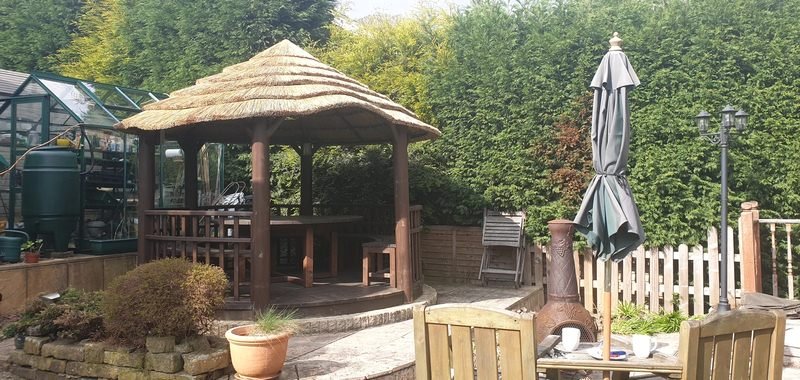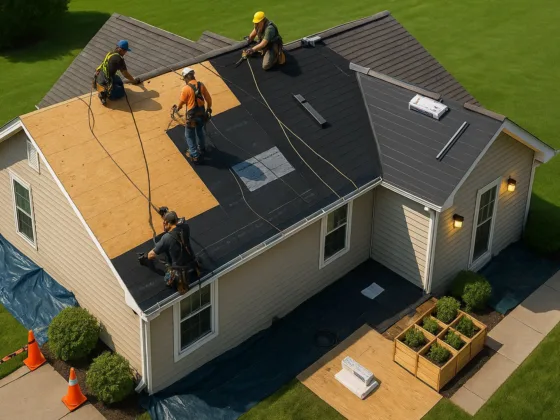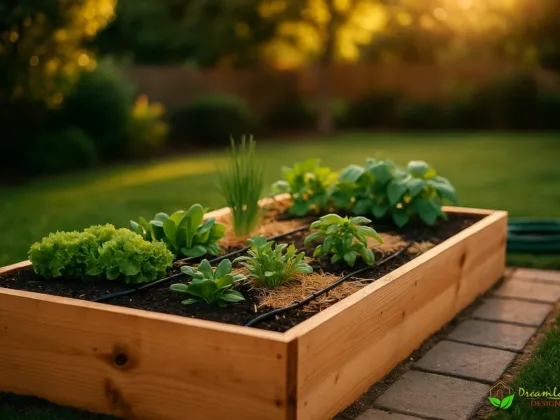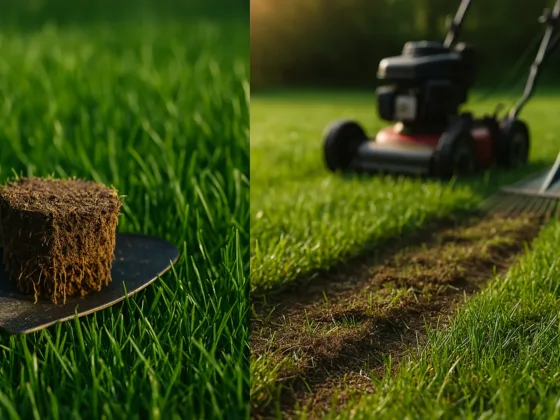Table of Contents Show
If you have an outdoor wooden gazebo in your garden, it will provide long-lasting outdoor space – if you look after it.
Whatever you use your wooden gazebo for – whether it be for entertaining, an outdoor dining area, a garden office or just shelter from the elements, the wood that makes the structure needs regular care and maintenance to ensure that it can service you and your needs for many years to come.

To maintain the beauty and function of your gazebo, we suggest the following steps are taken.
Every Month
Once a month, take some time to thoroughly inspect and clean your gazebo.
Using a long broom, remove any spiderwebs and look for any insect nests – be especially aware of wasp nests, as these could be very problematic for you in the warmer months. If you spot something that could be a wasp nest, then it is best to call an expert for removal.
Do bear in mind that bees can also nest in gazebos, especially if they are open sided, do ask for advice as a local beekeeper may be able to come and remove the bees for rehoming, protecting this valuable species whilst also meaning that you can use your gazebo safely.
Sweep any debris out and make sure that any soft furnishings get a wipe down with a clean cloth and warm, soapy water to keep them looking fresh. If you have any canvas in your gazebo, and you notice they have any oily or greasy staining, then a spirit-based cleaner should do the trick.
Outside your gazebo, be proactive with removing foliage that is encroaching on the building itself. We recommend leaving at least 3m around the gazebo that is clear of weeds, bushes and trees. This means that the wood used in the structure has excellent ventilation, preventing problems arising from damp.
We don’t suggest introducing climbing plants to the sides as the tendrils can get in between the boards and compromise the sealant and therefore the waterproof protection of the gazebo.
As part of your monthly checks, you may find that some nails need to be replaced or gently tapped back in as they have worked loose. You may also find that there has been some damage caused to the boards by the weather or maybe something has been dropped.
Replacing any damaged boards as soon as you notice them will ensure that the sealant you use to protect your wood is working efficiently.
Read Also:
Your gazebo roof is a very important part of the overall construction and needs special attention to make sure that it is performing optimally and maintaining waterproof protection form the elements.
Using a ladder, climb up and inspect the roof. No matter what material is used, whether it is felt, thatch or shingle, you must be sure to clear any debris and branches, so that you can check to see if there is any damage to the roof. Repair any damage immediately to protect the interior from any leaks.
If there are strong winds, or severe storms, it is a good idea to check your gazebo as soon as it is safe to do so. Gazebos are constructed to withstand the worst of our wonderful English weather; however accidental damage caused by an uprooted tree or a falling branch needs to be addressed as soon as it is practical to do so.
We suggest treating your gazebo every 3-5 years to maintain the sealant and the look of the wood. If you choose to use a paint finish on your gazebo, be sure to finish with a protective layer of varnish. It is worth noting that this method will require more frequent re-application and treatment due to the nature of the paint.

How to Treat Wooden Gazebo
Following the below steps will allow you to quickly and simply treat your gazebo.
Preparation
Remove any soft furnishings from the gazebo. These will need to be stored somewhere else until the treatment has been completed and is fully dry.
Brush out any debris, paying attention to between the boards both on the floor and in the walls. Be sure to clean the outside walls as they too will need to be treated – and this is a good reason to keep on top of the foliage around the gazebo.
Sanding
Sand all surfaces within the building, including the rafters, ring beam and flooring.
Be sure to sweep out any sawdust once this is completed, as any remaining debris will make it harder to paint on your sealant.
Treatment
Whatever your preferred method of treatment, now is the time to apply. Most are simply applied by a paintbrush. Whilst there are options to use rollers, or sprays, we think that taking the ‘slower‘ and more deliberate approach of using a paintbrush means that you are more likely to get an even, full coverage.
Whichever treatment you decide to use, it is prudent to add an extra layer on the floor and particularly the threshold, as these are high-traffic areas and likely to need more protection.
Following these simple steps every 3-5 years will help to keep your gazebo well-maintained, and extend its usable life for decades, providing you with that wonderful outside space that your garden deserves.









